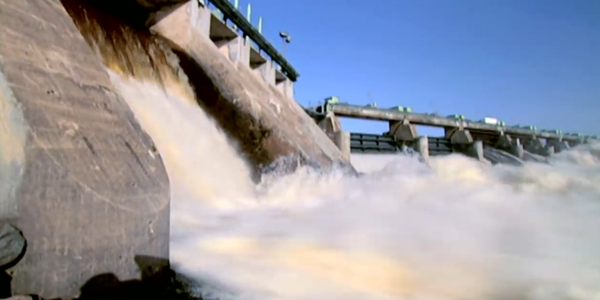By William Opalka
Numerous stakeholders have called for rehearing of New York’s Clean Energy Standard, raising objections over the subsidy for nuclear power, the elimination of support for some legacy renewable energy plants and the potential loss of renewable energy credits (REC) to adjoining states (15-E-0302).
Most of the requests were filed shortly before the mid-week deadline following the New York Public Service Commission’s Aug. 1 order approving the standard. (See New York Adopts Clean Energy Standard, Nuclear Subsidy.)
The CES is designed to support the state goal of 50% renewables by 2030, with nuclear power seen as a bridge until renewable energy facilities are built at scale.
Nuclear Subsidy Under Attack
The most controversial part of the order created a new “Tier 3” subsidy — zero emission credits (ZECs) — for nuclear power. Critics say the program would cost more than $7 billion over its 12-year lifespan. Without ZECs, nuclear owners said their plants would close, and state officials said carbon reduction goals could not be met.
The Alliance for a Green Economy and a coalition of environmental, anti-nuclear groups and elected officials objected to the subsidy as counter to the goals in the state Energy Plan and the Reforming the Energy Vision initiative.
“The PSC has failed to demonstrate that imposing exorbitant surcharges which inure solely to the benefit of nuclear operator(s) is in the public interest and consistent with existing statute and policy,” the coalition wrote.
Canadian Hydro’s Complaint
Canadian hydropower developer HQ Energy Services said additional resources from Quebec would not be credited for their environmental attributes. “For reasons unexplained, the CES order excludes significant amounts of hydroelectric power, including incremental hydroelectric power relying on new storage impoundment, from inclusion in the CES Tier 1 solicitation and REC process,” it wrote.
Tier 1 establishes the obligation of load-serving entities to invest in new renewable energy resources with an in-service date of Jan. 1, 2015, or later.
Tier 2 in the order is limited to run-of-river hydroelectric facilities of 5 MW or less, wind farms and biomass direct combustion plants that were operating before Jan. 1, 2003.
PSC staff had advocated splitting legacy renewables into two groups: Tier 2a for those resources able to sell their attributes in other states; and Tier 2b, for those unable to sell attributes because of their age or other restrictions imposed by neighboring states.
The order said splitting the “maintenance tier” for existing renewable energy resources was premature. Facilities eligible for these payments would have to demonstrate they would likely close because of their unprofitability without additional support from the state.
Nonprofit renewable energy advocate RENEW Northeast, biomass plant owner ReEnergy Holdings, Alliance for Clean Energy New York, Brookfield Renewable and the Independent Power Producers of New York all said the revision is discriminatory and that New York would likely lose the environmental benefits to other states.
“It is very possible that New York will have to replace the clean attributes of existing facilities that are sold in Massachusetts with clean attributes from new facilities at a higher cost to meet the 50-by-30 goal,” IPPNY wrote. (See Massachusetts Bill Boosts Offshore Wind, Canadian Hydro.)
Likewise, Transmission Developers Inc. seeks rehearing because of this “change in circumstances” since the order was adopted. “Such an initiative by a neighboring state very well could have the effect of siphoning off a significant portion of the renewable energy supply that would otherwise be available to New York state,” it wrote.
Procedural Complaint
The Public Utility Law Project alleged the compressed schedule under which the PSC considered ZECs violated the State Administrative Procedure Act (SAPA). The group contends the law requires 45 days for public comment instead of the 10 that the PSC allowed after the staff proposal that included ZECs was released in early July.
“Nowhere in SAPA, however, is there authorization for ‘add-on’ rules or rules resulting from the ‘logical outgrowth’ of the process since the issuance of a prior notice that did not cover the changes contemplated,” PULP wrote.
Last month, small hydropower owner Ampersand Hydro filed a complaint with the PSC, seeking inclusion in the ZEC tier as a non-emitting resource. (See Hydro Owner Wants in on New York Nuke Subsidy.) A similar request was made last week by Energy Ottawa.
Exelon also sought clarification to protect ZEC payments to its R.E. Ginna and Nine Mile Point nuclear plants in the event its proposed acquisition of the FitzPatrick plant falls through. (See FitzPatrick Sale Filed with New York Regulators.)




